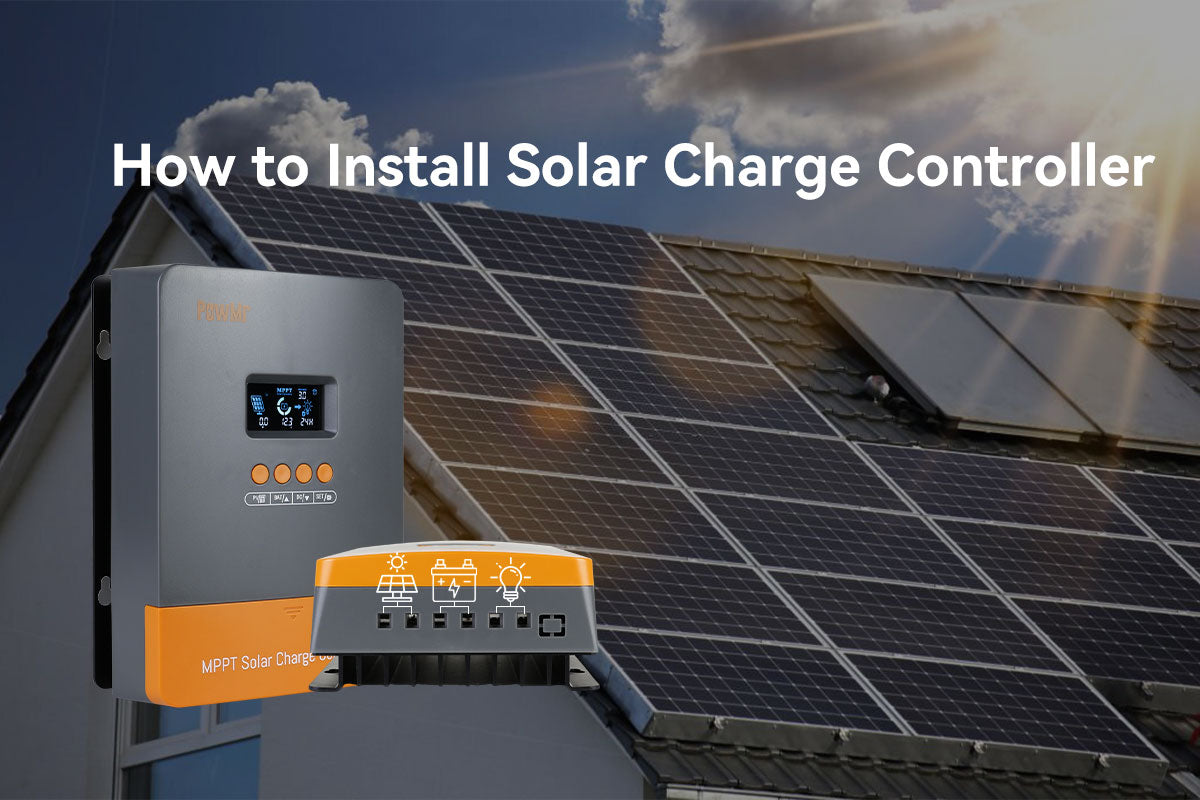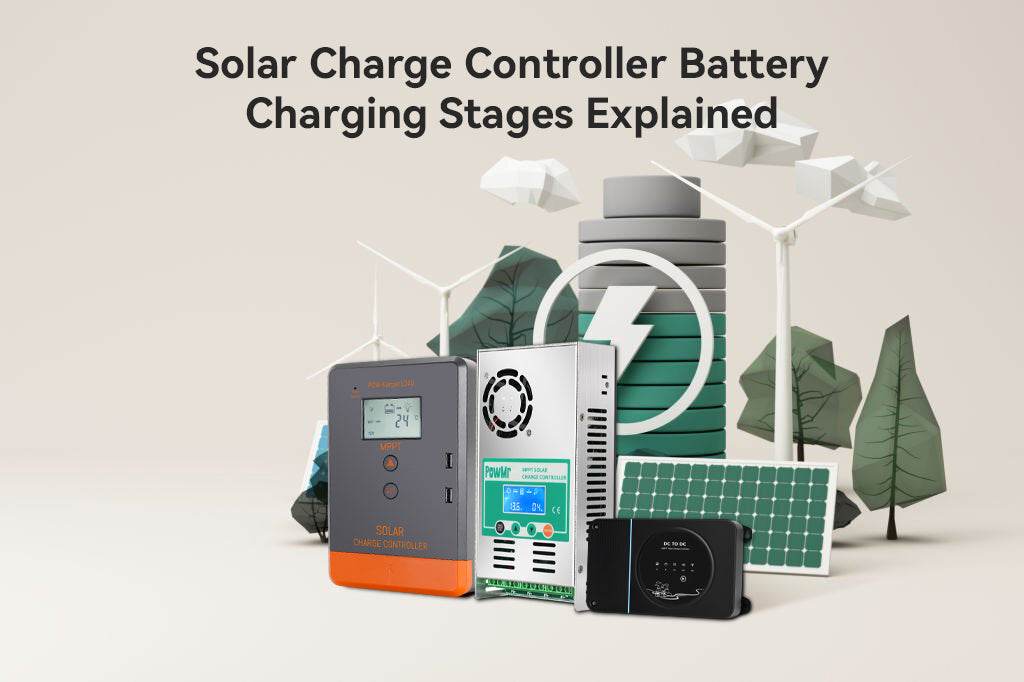In our previous article, we provided insights into choosing the appropriate type and size for a solar charge controller. In this guide, we will take you through a step-by-step installation process for a solar charge controller, whether it's in RVs or other off-grid solar systems. Additionally, we'll cover crucial guidelines for installing a solar charge controller and offer tips on wiring two or more solar charge controllers.
Solar Charge Controller Pre-Installation Guidelines
Before you embark on your solar charge controller installation journey, it's essential to have a clear plan in place. Here are some pre-installation guidelines to consider:
Placement for Solar Charge Controller Installation
Prior to installation, it is essential to address the following aspects in order to identify and establish a suitable, secure installation site:
- Install the controller in a space with good natural ventilation/exhaust.
- Maintain ample clearance around the controller. Ensure there is enough space between the wall and the controller (not less than the minimum clearance specified in the manual, as different product models may have varying requirements). This facilitates proper heat dissipation and cable connections.
- Mount the controller on a non-combustible wall, and verify that there are no flammable materials in close proximity. It is normal for the controller to experience a temperature increase during operation.
- Choose an installation environment that avoids direct sunlight, rain, humidity, and dust exposure. Keep the controller away from any sources of flammable liquids or gases, unless it is a waterproof solar charge controller.
- Do not install or place/operate the controller on top of or directly above the battery, or in a confined space with the battery. The battery may release explosive gases.
Preparation of Materials and Tools
Solar charge controllers typically come pre-matched with the essential materials required for installation. Ensure that the following items are all adequately prepared for seamless controller setup and wiring.
Solar Charge Controller Installation Materials Checklist:
- Solar Charge Controller
- Three DC-cables to connect the positive DC connection (+) of the controller to the positive pole of the DC-distribution
- Three DC-cables to connect the negative DC connection (-) of the controller to the positive pole of the DC-distribution
- Three Direct current breakers compatible with the controller's model.
- Wall-mounting screws designed to support the weight of the controller.
Ensure that you prepare the above materials in accordance with the correct specifications and guidelines.
Solar Charge Controller Wiring Sequence
Establishing a specific sequence for connection ensures efficient and safe installation.
Prioritize connecting the battery terminal wires to the charge controller initially, followed by linking the solar panel(s) to the charge controller. Always avoid connecting the solar panel to the charge controller before the battery. Reverse this sequence when disconnecting.
How to Install Solar Charge Controller
This section provides a rough reference for installing MPPT/PWM solar charge controllers, using the POW-M60-PRO 60a MPPT solar charge controller as an illustrative example. For specific details, please consult the user manual of the respective controller.
Note:
Do not close circuit breakers during the whole installation process.
Step1. Mount the solar charge controller
Mark the installation points on the wall according to the controller's mounting holes. Then, use a drill to create installation holes in the wall at the marked points and insert the expansion rubber screw plugs into the holes. Mount the controller vertically to the ground with the terminals facing downward.
Step2. Connnect the battery to the solar charge controller first
Always connect the battery first to allow the controller to recognize the system voltage. Do not alter the connection sequence arbitrarily, as it may result in system voltage recognition faults. Keep the cable length between the battery and controller as short as possible, ideally between 30cm to 100cm.
To prevent short circuits and reverse polarity, ensure that the positive (+) cable from the battery is connected to the corresponding positive (+) terminal on the controller, and the negative (-) cable from the battery is connected to the corresponding negative (-) terminal on the device.
If the battery is connected in reverse, the controller's output will also have the same polarity as the battery. Do not connect any loads during this time, as it could damage both the load and the controller. Exercise caution if the controller does not offer reverse-load protection.
Step3. Connect the DC loads and the solar charge controller
Attach the positive lead (+) of the DC loads to the positive terminal (+) designated for loads on the charge controller, and connect the negative lead (-) of the DC loads to the negative terminal (-) designated for loads on the charge controller.
Step4. Connect solar panels to the solar charge controller
Connect the positive lead from the solar panels to the corresponding positive terminal on the controller, and connect the negative lead to the negative terminal. Being attentive to polarity is crucial to prevent any potential damage to the system.
Step5. Connect the solar inverter to the solar charge controller
If you need to install an inverter, see the following system application diagram of the controller. Do not connect the inverter to the load side of the solar charge controller. Otherwise, irreversible damage may be caused to the device.

Step6. Check before starting up
See figure as shown below for wiring details. If everything is all right, and all the wires are firmly connected, close the circuit breakers at the battery side, PV module side, and load side in sequence to startup controller.
Step7. Turn on and setup the Solar Charge Controller
After all connections are securely made, you can now turn on the solar charge controller. Most solar charge controllers have LED indicators that show system status. Monitor these indicators to ensure everything is functioning correctly.
Access the charge controller's settings and configure them according to your system specifications. Test the system by observing the battery charging process, load distribution, and overall performance.
How to Wire Two Solar Charge Controllers with One Battery Bank
You may find the need to utilize two or more controllers in a system due to the following circumstances:You may find the need to utilize two or more controllers in a system due to the following circumstances:
- Expanding the solar energy system by incorporating additional solar panel arrays and batteries.
- When you have solar panels of different specifications, combining them together may not yield optimal efficiency. Fortunately, employing multiple charge controllers can address this issue.
- Installing solar panels in locations with varying levels of sunlight exposure, resulting in differing array efficiencies. Assigning individual controllers to these arrays enhances the overall energy output of the system.
Step1. Connect the solar charge controller with the solar charge controller
Determine the specifications of the controllers and solar panels. Then, connect the solar panels in the array (whether in series or parallel) to the charge controllers. This always depends on your solar charge controller specifications as well as the output voltage and current of the panels.
Step2. Connect the solar charge controller in parallel
Regardless of the number of controllers being used, while ensuring that the sum of currents from each array directed towards the battery bank does not exceed the battery's rated charging current, follow the diagram below to connect two controllers and then link them to the battery bank.
Note:
Connect the outputs of the two charge controllers in parallel to the battery bank to maintain the total delivered voltage. Each controller should be linked to a distinct solar panel array. This procedure can be repeated with any number of controllers as necessary.



